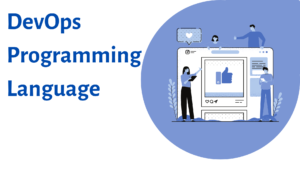Table of Recursion in java:
Introduction of recursion in java:
In the vast landscape of programming, recursion in java is a powerful technique that often leaves beginners baffled and experienced programmers in awe. In this comprehensive guide, we’ll dive deep into the world of recursion in Java, demystifying its principles, exploring real-world applications, and providing you with a solid foundation to wield this formidable tool.
Understanding Recursion in java:
Before delving into the intricacies of Recursion in Java, let’s clarify what recursion actually is. In simple terms, recursion is a programming concept where a function calls itself to solve a problem. It may sound counterintuitive, but when used correctly, recursion can simplify complex tasks and enhance code readability.
The Basics of Recursive in java Functions:
Recursive functions consist of two essential components: the base case and the recursive case. The base case serves as the termination condition, preventing the function from infinitely calling itself. In contrast, the recursive case is where the function calls itself with modified inputs, progressing towards the base case. Let’s illustrate this with a classic example: calculating factorial.
Calculating Factorial Using Recursion in java:
public class Factorial {
public static int factorial(int n) {
// Base case
if (n == 0 || n == 1) {
return 1;
}
// Recursive case
else {
return n * factorial(n - 1);
}
}
}In this example, the base case ensures that the recursion stops when n reaches 0 or 1. Otherwise, the function multiplies n by the result of the recursive call with n - 1. This elegant approach simplifies the factorial calculation immensely.
The Power of Divide and Conquer :
Recursion’s strength lies in its ability to divide complex problems into smaller, more manageable sub-problems. Each recursive call tackles a reduced version of the original problem until the base case is reached. This “divide and conquer” strategy is instrumental in solving various computational challenges, such as sorting algorithms (e.g., merge sort) and tree traversals.
Real-World Applications of Recursion in Java:
1. File System Traversal
Recursion in java is exceptionally handy when traversing file systems or directories. It allows you to explore nested directories and access files within them efficiently. The base case typically occurs when there are no more subdirectories to explore.
2. Mathematical Calculations
Mathematical problems like Fibonacci series generation, greatest common divisor (GCD) computation, and exponentiation can be elegantly solved using recursion. Each of these problems has its own base case and recursive logic.
3. Data Structures
Recursive data structures, such as binary trees and linked lists, often require recursive functions for operations like traversal, insertion, and deletion. Recursion simplifies these operations by breaking them down into manageable steps.
Best Practices for Using Recursion in Java :
While recursion is a powerful tool, it can lead to stack overflow errors if used carelessly. To ensure your recursive functions perform optimally:
1.Define Clear Base Cases:
Ensure that your base cases are well-defined and that they cover all possible termination scenarios.
2. Avoid Excessive Recursion:
Recursive functions with excessive calls can consume a significant amount of memory. Always strive for efficiency.
3. Use Tail Recursion:
In Java, tail recursion optimization isn’t guaranteed, but it’s good practice. Tail-recursive functions call themselves as the last operation, potentially improving performance.
Conclusion :
In the world of programming, mastering recursion in Java opens doors to solving complex problems with elegance and efficiency. By understanding the fundamentals, exploring real-world applications, and adhering to best practices, you can harness the full potential of recursion. It’s a tool that, when wielded with care, can transform your code into a work of art. So, don’t shy away from recursion; embrace it and let your programming skills soar to new heights. Happy coding!



